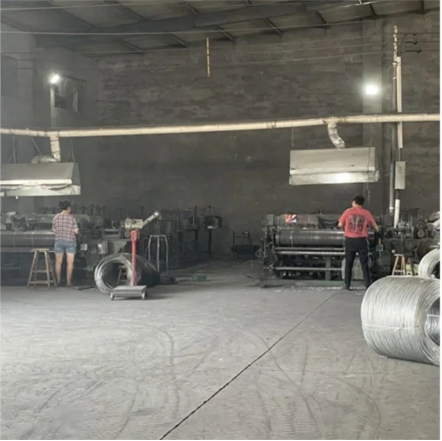Difference Between Common Nails and Box Nails Explained for Home Improvement Projects
Common Nails vs. Box Nails Understanding the Differences
When it comes to carpentry and construction, the choice of nails is critical. Among the various types of nails available, common nails and box nails are two prominent options, each designed for specific purposes. Understanding the differences between these two types can help you select the right fasteners for your projects, ensuring sturdiness, durability, and efficiency.
What are Common Nails?
Common nails are among the most widely used fasteners in construction. They are characterized by their thick shaft and large, flat heads. Ranging in size from 1 inch to 6 inches long, common nails are typically used for framing, where strong holding power is crucial. The large heads prevent the nails from sinking too deep into the wood, which helps in securing wooden beams and studs effectively.
The design of common nails contributes to their strength. Their thicker gauge allows them to hold more weight and resist bending. These nails can be made from various materials, including steel and galvanized steel, which offers enhanced corrosion resistance for outdoor projects. Common nails are ideal for applications where the nail will be exposed to stress, such as in structural support systems or heavy-duty construction.
What are Box Nails?
On the other hand, box nails are designed for lighter applications. They feature a narrower shaft compared to common nails, which reduces the amount of wood split during installation. This is particularly important when working with thinner or softer materials, as it minimizes damage and preserves the integrity of the wood.
Box nails typically have a smaller head than common nails, which allows them to be driven deeper into the material. This can provide a cleaner finish, especially in woodworking applications where aesthetics are important. Box nails are often used in projects such as cabinetry, furniture making, and other woodworking tasks where precision is key, and the risk of splitting the wood must be minimized.
Key Differences
The primary differences between common nails and box nails lie in their design and intended use
. Here are some of the key distinctionscommon vs box nails

1. Size and Gauge Common nails are generally thicker and larger than box nails. This gives them superior holding power but makes them unsuitable for delicate work. In contrast, box nails' slimmer profile ensures that they can be used without damaging the surrounding material.
2. Head Design Common nails come with a larger, flatter head, designed to prevent the nail from being driven too deep. Box nails, having a smaller head, can be concealed more easily in finishes like paint or stain.
3. Applications Common nails are best suited for heavy-duty projects like framing and roofing, while box nails excel in lighter applications like trim work and furniture assembly.
4. Risk of Splitting The thicker shaft of common nails can cause splitting in thin or brittle wood. This risk is reduced with box nails due to their thinner profiles.
Choosing the Right Nail
When deciding between common and box nails, consider the nature of your project. If you are framing a house or constructing a shed that needs to withstand weight and stress, common nails are the right choice. However, for finer woodworking or projects that demand a neat finish, box nails are the better option.
Furthermore, consider the materials you are working with. If moisture or corrosion is a concern, opt for galvanized nails—available in both types—to ensure the longevity of your project.
Conclusion
Ultimately, both common nails and box nails are essential tools in the toolbox of carpenters, builders, and DIY enthusiasts. Knowing their differences allows for more informed decisions when tackling various construction and woodworking tasks. By selecting the appropriate type of nail, you can enhance your project's strength, durability, and aesthetic appeal. Proper fasteners not only ensure the structural integrity of your work but also make the task easier and contribute to a polished and professional finish. Therefore, take your time to choose wisely, and your projects will surely benefit from the right choice between common and box nails.
-
Weather Resistance of Woven Wire and Chicken Wire Fencing MaterialsNewsJun.05,2025
-
Umbrella Nails Innovations in Roofing Fasteners for Wind ResistanceNewsJun.05,2025
-
Modern Barbed Wire Fence Designs for Perimeter ProtectionNewsJun.05,2025
-
How Iron Nail Wire Enhances Nail Strength and Installation EfficiencyNewsJun.05,2025
-
High-Security Razor Fence Solutions for Perimeter ProtectionNewsJun.05,2025
-
Durable Wire Netting Fence Solutions for Animal EnclosuresNewsJun.05,2025




